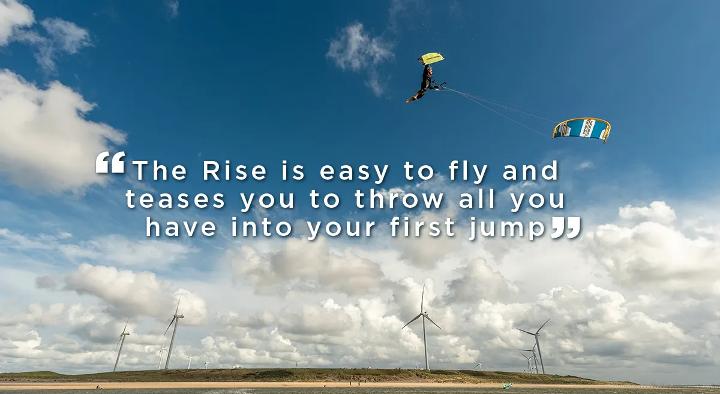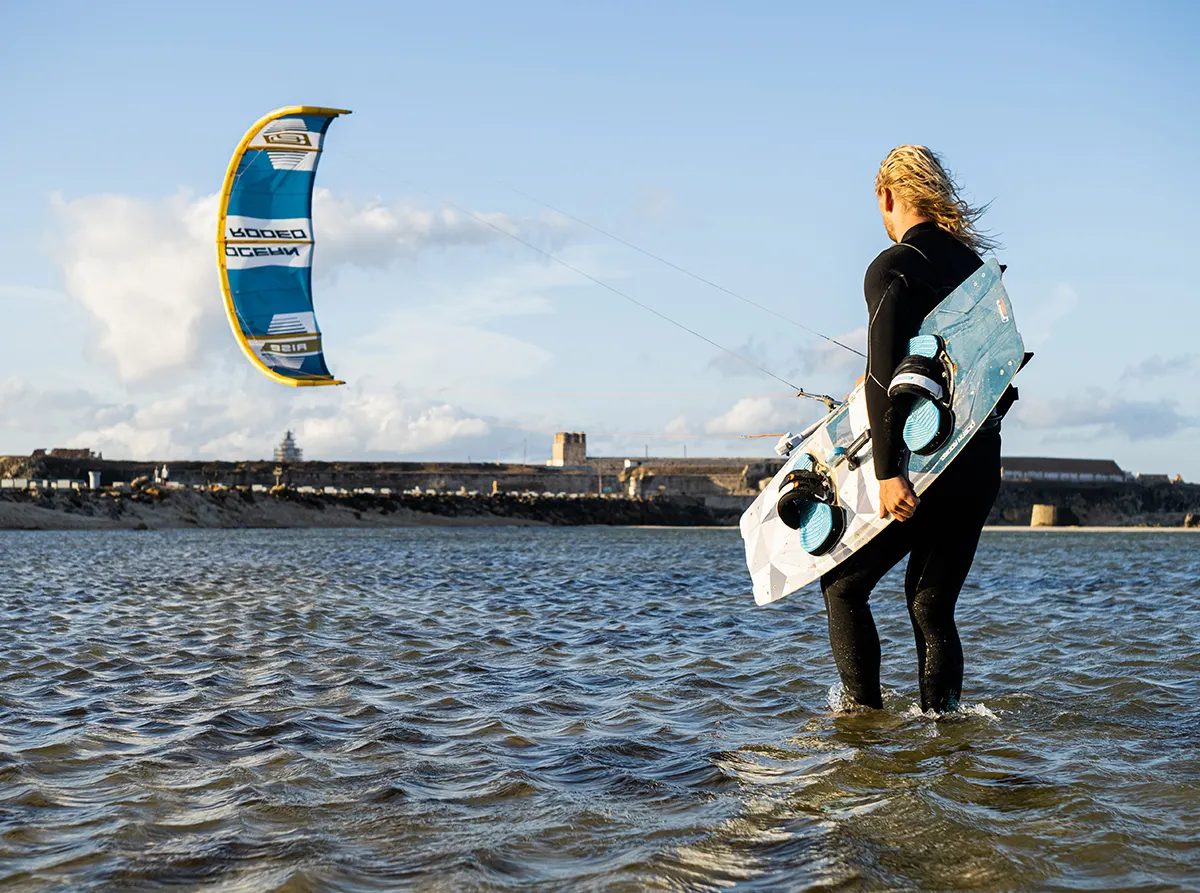Behind the Rise with CEO Richard Myerscough
What are the main benefits of the Rise over other Big Air kites?
Firstly, there’s a massive 40 to 50% weight reduction over competing Big Air 5 strut kites. The weight reduction on a 10m versus competitors kites is in the 2kg range! The ALUULA composite is also stiffer than Dacron. This gives more response to bar input for truly instant turning and sheeting. Meanwhile, the ALUULA seams are designed for a higher PSI, allowing riders to tune the airframe based on the wind conditions.
The Rise is a high aspect open C shape. The high aspect delivers the lift, while the open C shape results in fast turning and sheeting control. This combination, in addition to the ultra-light and stiff airframe, allows larger kites in the 12m range to become serious kite loop machines, opening more radical riding in lighter conditions. The Rise can accelerate out of the bottom arc of a kite loop faster than any kite on the market and in all wind strengths.
What made you decide to design a kite specifically for Big Air?
Our wave kite, the Roam, was the first kite to incorporate ALUULA into its airframe. Originally made with Dacron, the Roam was never a great jumping kite and was never intended to be one. But once it was reworked with an ALUULA airframe, it was transformed into a super fun jumping kite! The weight savings and the ultra-responsive airframe was a massive boost to all aspects of kite performance, including jumping. It was at this moment we knew we had to build a dedicated Big Air kite using ALUULA.

How much effect does ALUULA have on the product when it comes to the performance and design process?
To take full advantage of ALUULA requires a complete redesign versus traditional Dacron framed designs. ALUULA has allowed our design team to move beyond the performance constraints of Dacron in the airframe. In terms of weight, stiffness, and seam strength, ALUULA has opened a new door and an intensely exciting future for kite design. With ALUULA's stiffness and strength, we are refining tube diameters, arcs and shapes that we simply couldn’t support in the past with Dacron. The airframes have been refined and the diameter significantly reduced, and the stronger seams allow the luxury of using higher inflation pressures, and a higher PSI is a great feature that can be used to tune the kite’s performance depending on the conditions.
Were there any challenges in the design that had to be faced head-on?
The high performance, high aspect open C arc kite with optimised diameters is something very new and exciting to develop. To make a kite shape like this work in the past it would have required a very thick Dacron leading edge tube, which would have been very heavy with lots of drag.
Finally, describe to us what it’s like to ride from your perspective...
My first impression under the Rise was insane, having so much power on tap yet with such smooth and precise handling. Some of my best and loftiest jumps have been in moderate winds on the Rise 12m prototype… scaring myself in 20 knots! The Rise is easy to fly and teases you to throw all you have into your first jump, which may well turn into an “Oh sh*t” moment as it rips you skyward far beyond what you expected! The Rise is quite simply a blast and has brought me back to twin-tip riding after a 10-year hiatus to wave riding...
